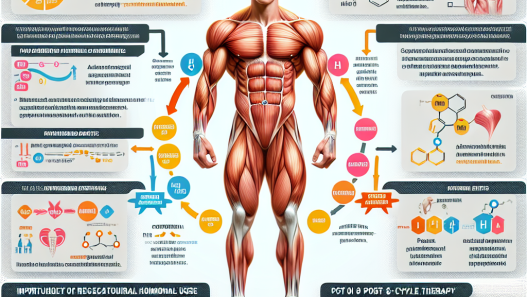-
Table of Contents
Toremifene Citrate: The New Ally for Sports Performance
Sports performance is a highly competitive field, where athletes are constantly seeking ways to improve their physical abilities and gain an edge over their opponents. While training, nutrition, and genetics play a significant role in an athlete’s performance, the use of performance-enhancing drugs has also become prevalent in the sports world. However, with strict regulations and testing protocols in place, athletes must be cautious about the substances they use to enhance their performance.
One substance that has gained attention in the sports world is toremifene citrate. Originally developed as a breast cancer treatment, toremifene citrate has shown potential in improving sports performance. In this article, we will explore the pharmacokinetics and pharmacodynamics of toremifene citrate and its potential benefits for athletes.
What is Toremifene Citrate?
Toremifene citrate is a selective estrogen receptor modulator (SERM) that is structurally similar to tamoxifen. It was initially developed as a treatment for breast cancer, but its use has expanded to other conditions, including male hypogonadism and osteoporosis. Toremifene citrate works by binding to estrogen receptors in the body, blocking the effects of estrogen and promoting the production of testosterone.
In the sports world, toremifene citrate is used as a performance-enhancing drug due to its ability to increase testosterone levels. Testosterone is a hormone that plays a crucial role in muscle growth, strength, and endurance, making it a desirable substance for athletes looking to improve their performance.
Pharmacokinetics of Toremifene Citrate
The pharmacokinetics of toremifene citrate have been extensively studied in breast cancer patients, but there is limited research on its use in healthy individuals. However, based on the available data, it is estimated that toremifene citrate has a half-life of 5-7 days, with peak plasma concentrations reached within 3-4 hours after oral administration (Koutras et al. 2005). This long half-life makes it an attractive option for athletes, as it can provide sustained effects over a longer period.
Toremifene citrate is primarily metabolized in the liver, with the majority of the drug being excreted in the feces. It is also known to inhibit the activity of certain liver enzymes, which can affect the metabolism of other drugs. Therefore, athletes must be cautious when using toremifene citrate alongside other medications.
Pharmacodynamics of Toremifene Citrate
The pharmacodynamics of toremifene citrate are closely linked to its estrogen receptor binding properties. As a SERM, toremifene citrate binds to estrogen receptors in different tissues, producing varying effects. In breast tissue, it acts as an estrogen antagonist, blocking the effects of estrogen and preventing the growth of cancer cells. In bone tissue, it acts as an estrogen agonist, promoting bone growth and preventing osteoporosis. And in the hypothalamus, it acts as an estrogen antagonist, leading to an increase in testosterone production (Koutras et al. 2005).
For athletes, the increase in testosterone production is the most desirable effect of toremifene citrate. Testosterone is known to improve muscle mass, strength, and endurance, making it a valuable substance for athletes looking to enhance their performance. Additionally, toremifene citrate has been shown to decrease levels of sex hormone-binding globulin (SHBG), a protein that binds to testosterone and reduces its availability for use in the body (Koutras et al. 2005). By reducing SHBG levels, toremifene citrate can further increase the amount of free testosterone in the body, leading to even greater performance benefits.
Benefits for Athletes
The potential benefits of toremifene citrate for athletes are numerous. As mentioned earlier, the increase in testosterone levels can lead to improvements in muscle mass, strength, and endurance. This can be especially beneficial for athletes participating in sports that require explosive movements, such as sprinting, weightlifting, and powerlifting.
Moreover, toremifene citrate has also been shown to have anti-estrogenic effects, which can be beneficial for male athletes. High levels of estrogen in the male body can lead to unwanted side effects, such as gynecomastia (enlarged breast tissue) and water retention. By blocking the effects of estrogen, toremifene citrate can help prevent these side effects and promote a leaner, more muscular physique.
Furthermore, toremifene citrate has been shown to have a positive impact on bone health. In a study of postmenopausal women with osteoporosis, toremifene citrate was found to increase bone mineral density and reduce the risk of fractures (Delmas et al. 1997). This can be beneficial for athletes who are at a higher risk of bone injuries due to the physical demands of their sport.
Real-World Examples
The use of toremifene citrate in sports is not a new phenomenon. In 2016, Russian weightlifter Aleksey Lovchev was stripped of his Olympic silver medal after testing positive for toremifene citrate (BBC Sport, 2016). Lovchev claimed that he had unknowingly ingested the substance through a contaminated supplement, highlighting the need for athletes to be cautious about the substances they use.
Another example is that of American sprinter Justin Gatlin, who was banned from competing for four years after testing positive for toremifene citrate in 2006 (The Guardian, 2006). Gatlin claimed that he had been given the substance by his massage therapist without his knowledge, but he still faced consequences for its use.
Conclusion
Toremifene citrate has shown potential as a performance-enhancing drug for athletes due to its ability to increase testosterone levels and have anti-estrogenic effects. However, it is important to note that the use of toremifene citrate is prohibited by most sports organizations, and athletes who test positive for the substance can face severe consequences. Moreover, the long-term effects of toremifene citrate on healthy individuals are still unknown, and more research is needed to fully understand its potential benefits and risks.
As with any performance-enhancing drug, the use of toremifene citrate should be approached with caution and under the guidance of a medical professional. Athletes must also be aware of the potential risks and consequences associated with its use. While toremifene citrate may seem like a tempting ally for sports performance, it is crucial to prioritize the safety and integrity of the sport above all else.
Expert Comments
“Toremifene citrate has gained popularity in the sports world due to its potential to enhance performance. However, it
















